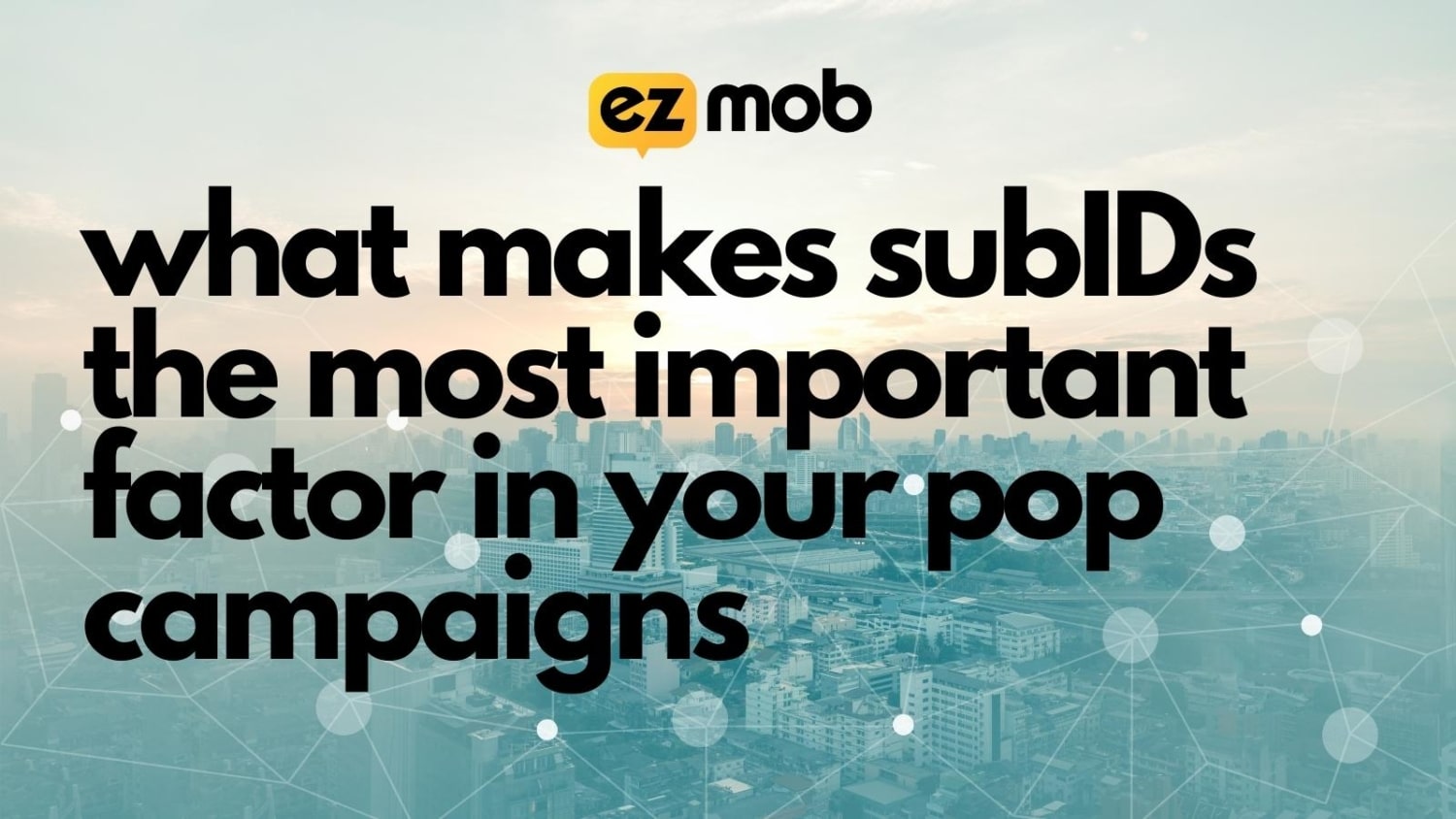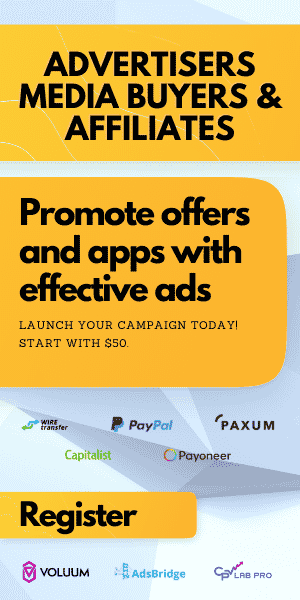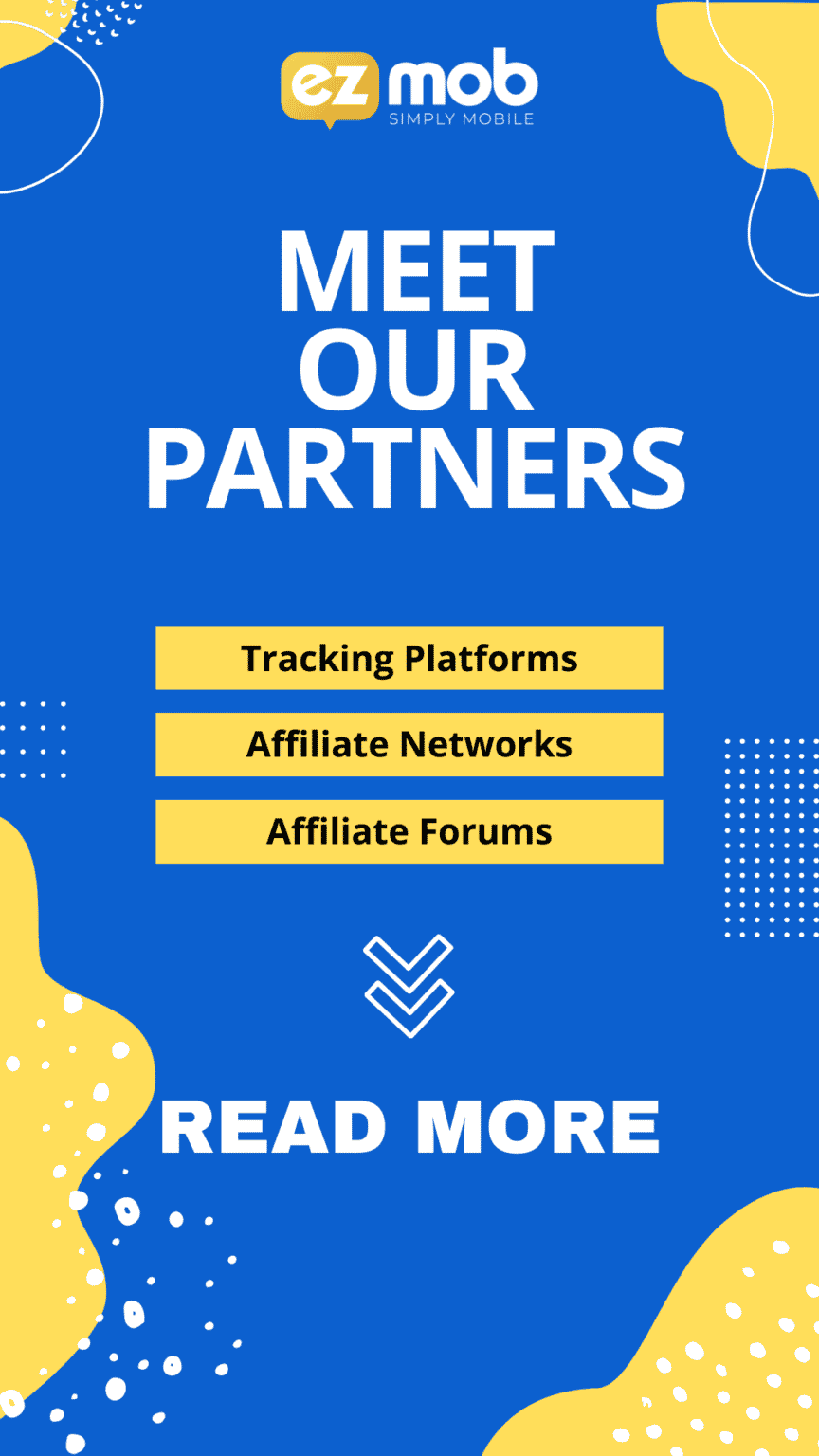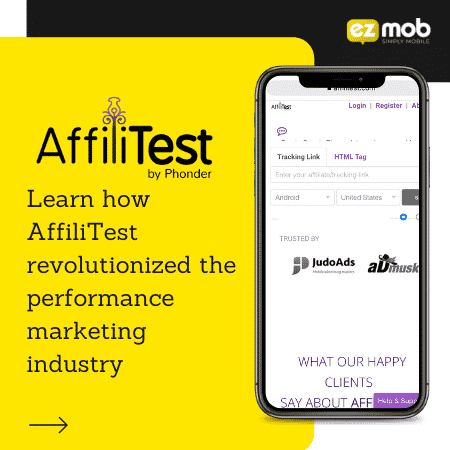
What are SubIDs?
A subID is a parameter that passes a unique placement ID through the campaign ad URL.
If we imagine publishers as a hierarchical structure, then a publisher is a unique account holder, within that account a publisher may own a site or more than one site, and under each of those sites each placement (specifically for pop campaigns) can hold one or more SubIDs.
SubIDs can mean different things, for ad networks each subID may mean a unique placement, a publisher might use a subID to mark different niches of his website. That’s why it’s important to understand exactly what they mean in your specific case.
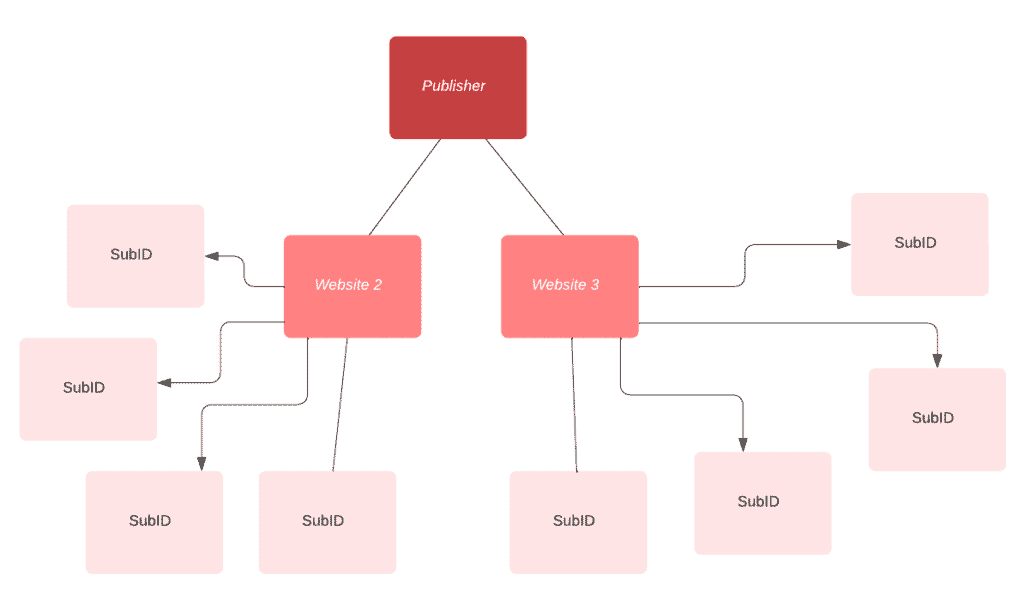
somewebsite.com/ez/page?clickID=abcdefgh123&os=Windows&subid=12345
For example in the link above, the parameters are
- ClickID: used for tracking conversions
- OS: used for tracking a user operating system
- subID: used for tracking a specific placement
SubIDs may be used for tracking different aspects of a user device or location, these can include:
- Placements
- Creatives
- Audience segments
- Referring URLs
- Calls-to-action
- Keywords
- Landing pages
- Acquisition Channels
In this scenario, we will discuss subIDs as unique placement data, a specific sub-website, or a sub-publisher that is a unique domain, which is its main usage of it when discussing pop ads campaigns.
Table of Contents
Why are subIDs important for optimization?
SubIDs are crucial for optimizing your account simply because each of them drives a different level of value to your campaign. For example, if you’re converting an affiliate offer that’s targeting a certain OS, Carrier, and Country, there’s so much you can do in terms of optimization for that campaign that will be effective.
Usually, affiliate marketers understand what converts best for their offer within a couple of days and will replicate that in all their media buy. For example, if you figure out that a certain carrier converts best for this offer, or a certain browser, you’re likely to give them more attention in your other campaigns promoting the same app.
Sure, you can continue to optimize for different browser versions, OS versions, languages, and more. But none of that type of optimization will be as effective as SubID optimization.
Pop campaigns targeting usually invite a huge number of different publishes and placements to take part in any campaign. Even on a $10 spend you will get hundreds of different publishers all pitching in a couple of impressions with about 10% of them delivering significant traffic. Dealing with those traffic sources, on the subID level, would yield more improvement over a shorter amount of time for your campaigns than anything else.
How do you optimize pop campaigns with SubIDs?
There are several ways you can use SubID data to improve your campaigns.
- SubID Blacklisting
- SubID Whitelisting
- SubID Bid Adjustment
- SubID Automations
SubID Blacklisting
Pop ad networks usually generate billions of daily ad requests from thousands of publishers with multiple sites and placements, this creates very fragmented data when you drill down to the SubID level.
Pop advertising is not as transparent as programmatic advertising and is not as expensive too. Pop advertising will usually not share referred URLs data but will share SubID data. So advertisers and media buyers can’t get a lot of contextual value from it, but when done right you can actually get a lot of value from knowing which SubIDs work for you, and which do not, that’s where SubID blacklisting comes in.
What is SubID blacklisting?
Blacklisting is removing certain subIDs, in this scenario, from the campaign targeting. Once a SubID is blacklisted the campaign will not involve that SubID moving forward.
When you run reports for a particular campaign or group of pop campaigns you might be running, and view the SubID data you may blacklist those subIDs that are not converting to allow more traffic to other SubIDs that will be able to deliver more within your daily cap.
SubID Whitelisting
Similar and opposite to subID blacklisting, subID whitelisting means targeting only specific traffic sources, or SubIDs, within your campaign’s reach.
Whitelisted campaigns tend to include better-converting sources, a much healthier bid, and hopefully a great bottom line and ROI. Keep in mind, that good subIDs are the value you develop within a specific ad network as a media buyer, good subIDs may work for several verticals or just for one, and the more you are familiar with good traffic sources the more you can make them more in your favor with more campaigns.
It is important to keep qualifying more SubIDs in your whitelist campaigns since publishers move between different pop ad networks all the time or switch their ad tags, and due to the lack of discrepancies sometimes great performing sources will just disappear.
Another point about whitelisting, is for your whitelisted campaigns don’t copy the same general campaign strict targeting, allow a bit looser targeting for whitelisted campaigns as they are relying on traffic sources that performed very well. Previous insights on your general campaign that may have been generated by subIDs that you later blacklisted due to bad performance might have impacted your judgment of what’s performing well for the campaign. Now that you’re restricting traffic to the best subIDs for this campaign you should allow traffic from previously excluded targeting features.
SubID Bid Adjustment
When subIDs are generating conversions for your affiliate offer but not exactly at the desired eCPA goal that fits your campaign’s KPIs, instead of blacklisting them entirely, you can simply apply a bid adjustment and decrease the bid this specific subID gets by a certain percentage.
If a certain campaign’s bid is $0.30 CPM for popunder traffic, and SubID 393273 is generating an eCPA of $0.50 per conversion where your KPI is $0.25, simply apply a 50% reduction only on SubID 393273 which will instantly the eCPA down to your range.
An alternative to bid adjustment would be duplicating the campaign for a lower bid and whitelisting this SubID to run within that low-bid campaign targeting.
SubID Automation
Instead of running daily reports for each campaign you run on any self-serve advertising platform, with EZmob, you may set up a few rule-based automation that will allow you to blacklist subIDs from your campaign that reach a certain click amount or that generate too few conversions for a certain spend.
How do I blacklist and whitelist subIDs from a campaign?
Applying blacklisting or whitelisting for popunder and push notification ad campaigns is easy on the self-serve ad platform.
- Go to campaigns
- Click the edit icon on the left side of the relevant campaign line

- Scroll down to the TQ & Analytics section and click on the ‘Show feed lists button to view a function selection box that includes whitelisting and blacklisting and a text input box
- paste all the SubIDs that are relevant for your selection.
- Save
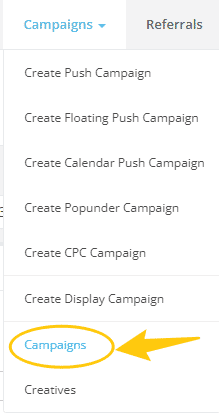
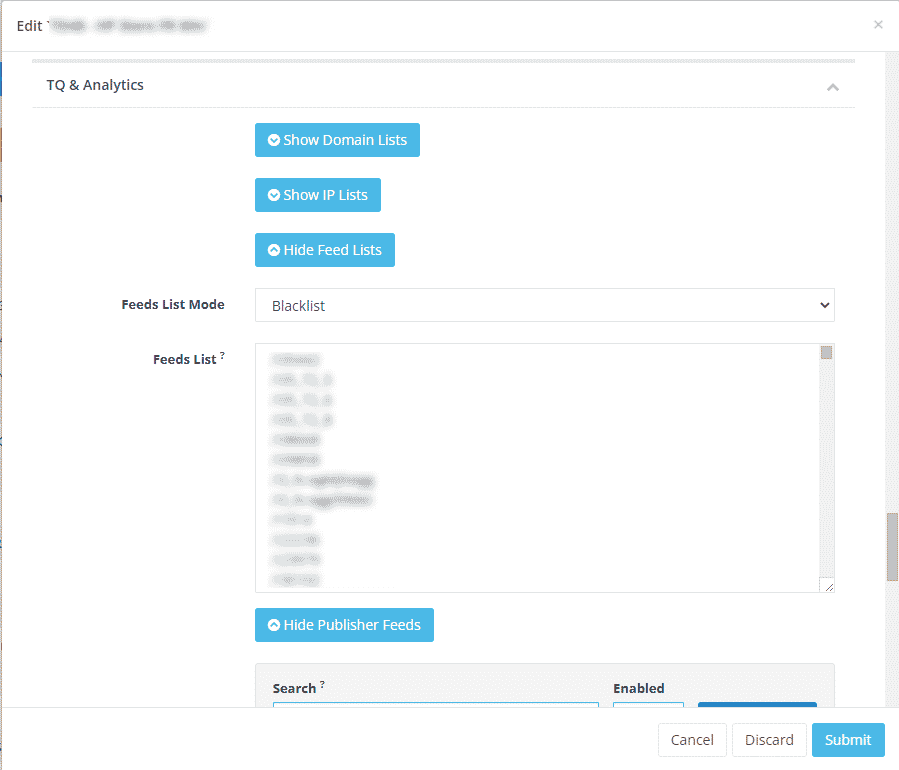
How to apply bid adjustments on your campaign?
In the same menu as above, instead of choosing show feeds, choose Publisher feeds instead.
Here you can switch offer specific publisher feeds or configure bid adjustment in percentage for each different traffic source or feed.
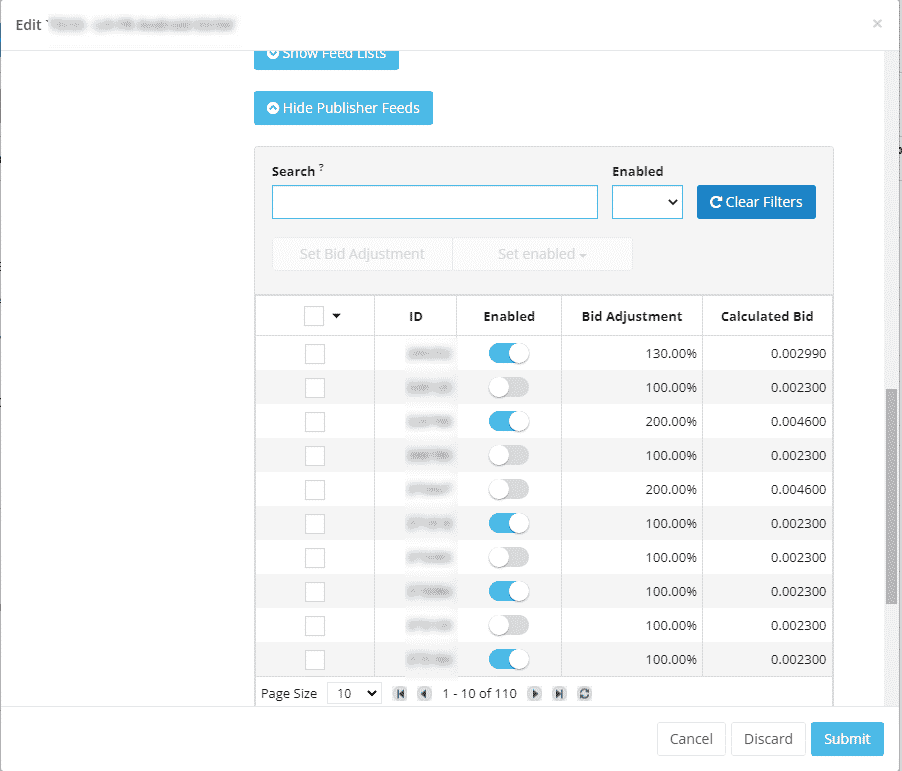
Does google analytics support subid tracking?
In a way it does, you can try to either pass SubID data through the usual UTM parameters but consider that google analytics is a free tracking tool and is limited in data usage for free clients. When you learn how to buy pop traffic you realize you are bound to see thousands of subIDs involved in trafficking your campaign, sometime Google analytics sees this influx of traffic as trouble and may block your tag.
When should you use SubID tracking?
Always, won’t you like to know if your campaign is controlled by 3 good SubIDs and 300 bad ones, even if overall the campaign is doing well, it would do better if you drilled down to the subID level in your reporting. If you’re using a campaign tracking solution such as Bemob, Skro, Voluum, or CPV Lab Pro then you are already ready to go with the SubID reporting breakdown on the tracker platform’s side.
Conversion reports on the different tracking platforms would also include the subID data allowing you to quickly note any performing subID, or site ID, placements.
The bottom line
Get familiar with what is the best targeting that works for your offer with a general low bid campaign at first, then duplicate campaigns with the best performing sources as a whitelist campaign.
Check your win-rate daily and update your bids accordingly for whitelisted campaign, or apply bid adjustments or automation rule for performing and non performing placements.
SubID tracking in the non-transparent world of pop advertising is one important window into great traffic sources which will work across multiple traffic sources and can be used for any campaign you run in the future.
Read more reviews and articles
Learn how to setup popunder campaigns and more about campaign management on EZmob’s Helpdesk

